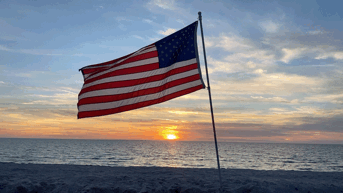
- Edward Maria Wingfield (1607) one of four incorporators of the Virginia Company, who financially helped fund the colony;
- John Ratcliffe (1608), Captain of the Discovery, who was killed by Chief Powhatans warriors in an ambush;
- Matthew Scrivener (1608) who drowned in a storm crossing over to Hog Island;
- John Smith (1608–1609) fought the Muslim Ottoman Empire in Eastern Europe before settling Jamestown; he was almost killed by Indian Chief Powhatan but rescued by the Chief's daughter, Pocahontas
- Sir Thomas Gates (May–June 1610, 1611–1613) was knighted for his gallantry in the capture of Cadiz, Spain. He was on the third supply mission to Virginia, but was shipwrecked with the Sea Venture on the Island of Bermuda for 10 months, the written account of which inspired Shakespeare's play, The Tempest.
- Thomas West, Baron De La Warr (1609–1618) was the largest investor in the joint stock Virginia Company. He arrived in Jamestown in 1610 just in time to save the colony from abandonment; namesake of the Delaware River and Colony;
- Sir Samuel Argall (1617–1619) a sea captain, knighted by King James for hindering French colonization of Acadia, Canada, and Algiers, North Africa; noted for kidnapping Pocahontas who John Rolfe fell in love with and married, restoring relations with the Powhatan Tribe;
Sir Edwin Sandys distinguished himself as the chief opponent of the "divine right of kings" and instead argue for limiting the King through a "constitutional monarchy."
Sandy's gained controlling interest of the Virginia Company in 1619, where he helped to establish a representative assembly in Virginia—the first representative body in the North American colonies -- the Virginia Hose of Burgesses.
King James hated Sandys so much, that when Sandys stood for reelection as the Virginia Company treasurer in 1620, James intervened, saying: “Choose the Devil if you will, but not Sir Edwin Sandys.”
Sandys lent 300 pounds without interest to help the Pilgrims settle the Plymouth Colony in Massachusetts.
Sir George Yeardley (1616–1617, 1619–1621) who sailed on the Sea Venture was best remembered for presiding over that initial legislative meeting of the colonists in the Jamestown church choir loft in 1619.
- Sir Thomas Dale (May–August 1611, 1613–1616) naval commander who helped Dutch fight for independence from Spain, knighted by King James; was sent by the London Company to Virginia in May of 1611. He cancelled Virginia Company instructions of "communal property" and assigned each colonist their own plot of land; he sailed with John Rolfe and his wife Pocahontas back to England.
Sir Thomas Gale sailed up the James River and founded Henricus, the colony’s second settlement, also named after James' eldest son, Prince Henry.
In 1619, Henricus became the location of the first English hospital in America and the first chartered college in the English colonies, initially designed for Powhatan children to learn trades, agriculture, and Christianity, "the work of conversion."
Unfortunately, after Powhatan's death in 1618, his younger brother, Opechancanough, was chief of the Indian confederation. He carried out the massacre in 1622 which killed 347 colonists and caused Henricus to be abandoned for several years.
- Sir Francis Wyatt (1621–1624) knighted by King James; helped defend Jamestown from 1622 Indian attack. He wrote a constitution specifying colonists' privileges, and later helped found Maryland.






Thank you for providing a glimpse of truth about our founding fathers and their deep abiding faith in making determinations for the governance of our great United States of America!